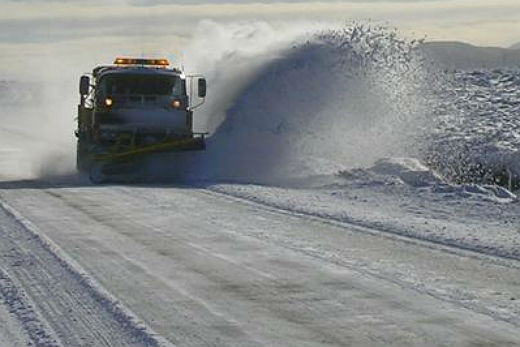Snow has closed the Napier Taupo Road (SH5) and the NZ Transport agency is advising it will take some time to clear.
Contractors are using snow ploughs to try and clear the road, but the closure is expected to remain in place for some time and motorists are advised to consider delaying unnecessary travel.
Snow ploughs are working on SH5. Photo: file.
Snow falls are also affecting parts of State Highway 1 near Wairakei, north of Taupo. The road is currently open to traffic but extra care is required when travelling on the route.
Driving conditions in parts of Ruapehu, Taupo and the south Waikato, as far north as Tirau are likely to be hazardous, says the Transport Agency's Waikato journey manager, Liam Ryan.
'Currently these icy conditions are forecast to last for the next few days across the Waikato including areas to the north of the Central Plateau,” says Liam.
'Motorists travelling in or through the Ruapehu, Taupo and South Waikato districts should check conditions before travelling this week particularly overnight and during the morning when ice is most commonly found.
'It is important that people slow down, allow more time for their journey, drive to the conditions and be prepared for unexpected hazards in this type of weather.”
The latest information on road conditions is at www.onthemove.govt.nz, www.nzta.govt.nz/traffic, or by calling 0800 4 HIGHWAYS (0800 44 44 49).
The Transport Agency's top winter driving tips:
*The winter climate can be severe, with heavy rainfall, high winds, ice and snow. Take your time, be patient and drive to the conditions.
*Slow down. It only takes a split second to lose control in wet or icy conditions, and keeping your speed at 10kmh below the legal limit will greatly reduce your risk of a crash.
*Black ice or frost can make for very slippery road surfaces, often in the early morning and any time the road is shaded.
*Watch the following distance. Nose-to-tail crashes are far more common in wet weather, and stopping distances can nearly double on wet roads. Keep at least a 4 second following distance between you and the vehicle in front.
*Sunstrike is most likely to hit at sunrise or sunset. Keep windscreens clean – inside and out – and be ready to use sunglasses or sun visors. If you can't see, pull over and wait till you can.
*It pays to stick out like a sore thumb in winter, so turn on the lights whenever there's heavy cloud cover, fog or rain. You'll be much more visible to other vehicles, cyclists and pedestrians – especially at intersections – and you'll probably be able to see better too.



0 comments
Leave a Comment
You must be logged in to make a comment.